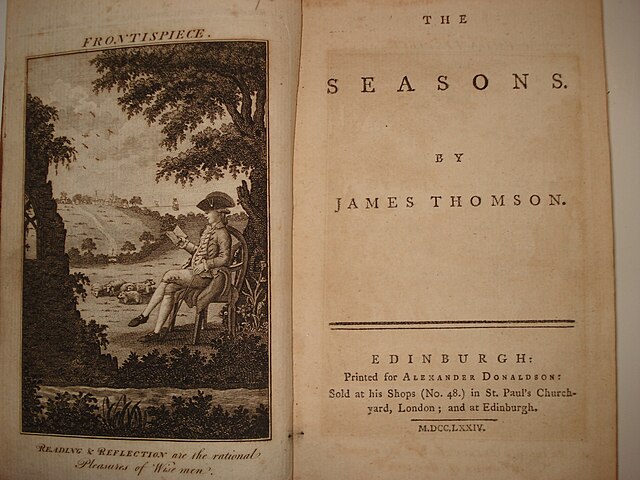Grongar Hill is located in the Welsh county of Carmarthenshire and was the subject of a loco-descriptive poem by John Dyer. Published in two versions in 1726, during the Augustan period, its celebration of the individual experience of the landscape makes it a precursor of Romanticism. As a prospect poem, it has been the subject of continuing debate over how far it meets artistic canons.
The hill as seen from nearby Dryslwyn Castle
William Gilpin's sketch of Dinevawr Castle, illustrating his theory of perspective, 1782
Grongar Hill, Carmarthenshire, a print by William Wallis after Henry Gastineau. Steel engraved with hand colouring
Topographical poetry or loco-descriptive poetry is a genre of poetry that describes, and often praises, a landscape or place. John Denham's 1642 poem "Cooper's Hill" established the genre, which peaked in popularity in 18th-century England. Examples of topographical verse date, however, to the late classical period, and can be found throughout the medieval era and during the Renaissance. Though the earliest examples come mostly from continental Europe, the topographical poetry in the tradition originating with Denham concerns itself with the classics, and many of the various types of topographical verse, such as river, ruin, or hilltop poems were established by the early 17th century. Alexander Pope's "Windsor Forest" (1713) and John Dyer's "Grongar Hill" (1726/7) are two other often mentioned examples. In following centuries, Matthew Arnold's "The Scholar Gipsy" (1853) praised the Oxfordshire countryside, and W. H. Auden's "In Praise of Limestone" (1948) used a limestone landscape as an allegory.

An engraving illustrating Pope's "Windsor Forest", 1720
Frontispiece to James Thomson's The Seasons
Edmund Burke's writing on the sublime influenced the Romantic era of topographical poetry.






